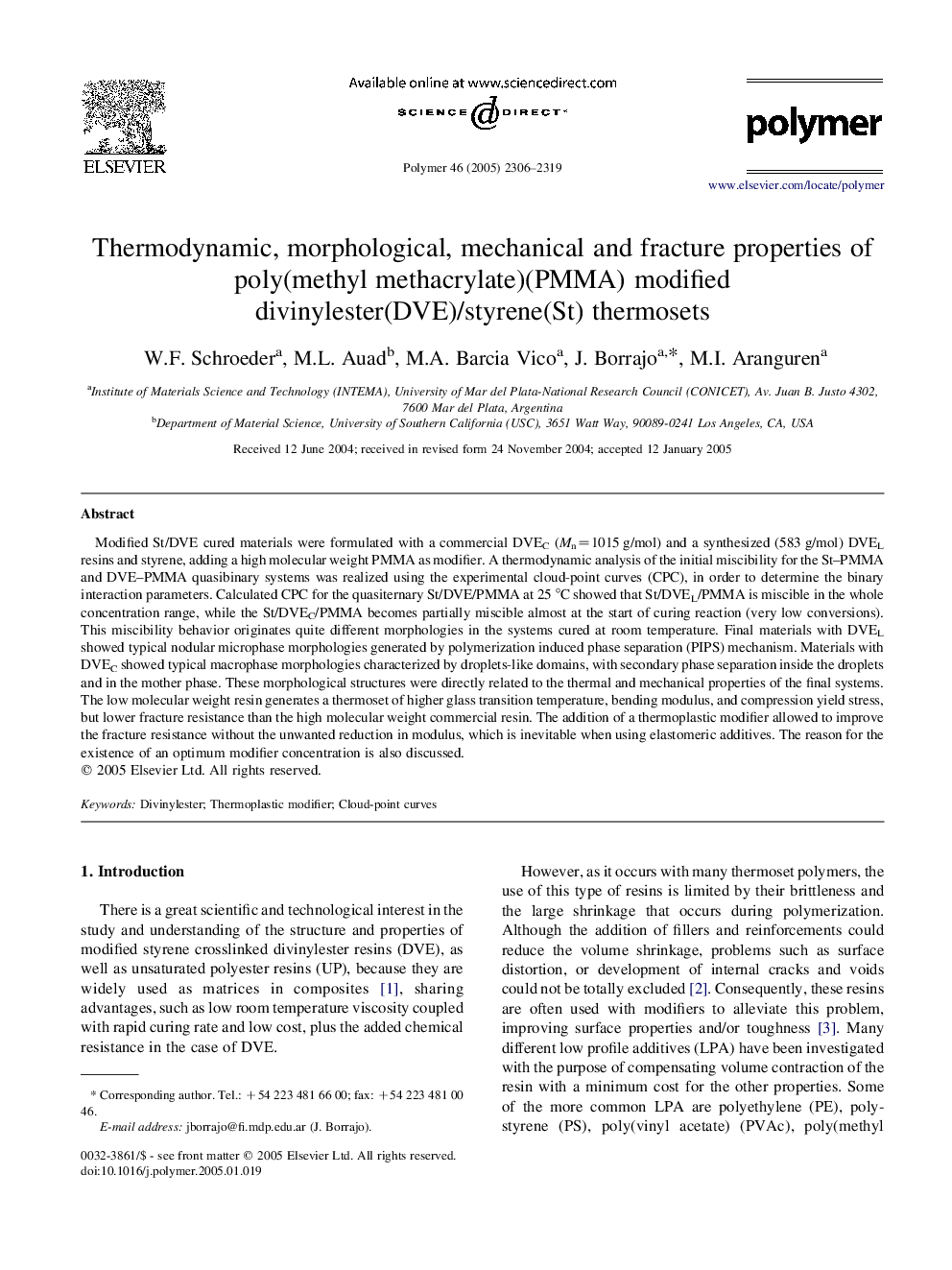| کد مقاله | کد نشریه | سال انتشار | مقاله انگلیسی | نسخه تمام متن |
|---|---|---|---|---|
| 5191944 | 1381243 | 2005 | 14 صفحه PDF | دانلود رایگان |

Modified St/DVE cured materials were formulated with a commercial DVEC (Mn=1015 g/mol) and a synthesized (583 g/mol) DVEL resins and styrene, adding a high molecular weight PMMA as modifier. A thermodynamic analysis of the initial miscibility for the St-PMMA and DVE-PMMA quasibinary systems was realized using the experimental cloud-point curves (CPC), in order to determine the binary interaction parameters. Calculated CPC for the quasiternary St/DVE/PMMA at 25 °C showed that St/DVEL/PMMA is miscible in the whole concentration range, while the St/DVEC/PMMA becomes partially miscible almost at the start of curing reaction (very low conversions). This miscibility behavior originates quite different morphologies in the systems cured at room temperature. Final materials with DVEL showed typical nodular microphase morphologies generated by polymerization induced phase separation (PIPS) mechanism. Materials with DVEC showed typical macrophase morphologies characterized by droplets-like domains, with secondary phase separation inside the droplets and in the mother phase. These morphological structures were directly related to the thermal and mechanical properties of the final systems. The low molecular weight resin generates a thermoset of higher glass transition temperature, bending modulus, and compression yield stress, but lower fracture resistance than the high molecular weight commercial resin. The addition of a thermoplastic modifier allowed to improve the fracture resistance without the unwanted reduction in modulus, which is inevitable when using elastomeric additives. The reason for the existence of an optimum modifier concentration is also discussed.
Journal: Polymer - Volume 46, Issue 7, 10 March 2005, Pages 2306-2319